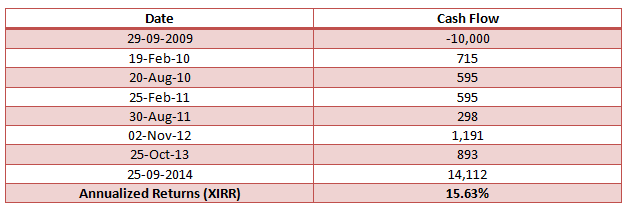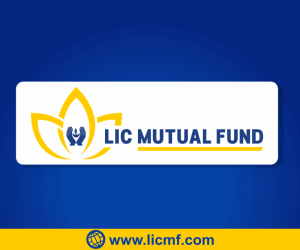Mutual Fund Growth or Dividend Option: What should you choose

Sometimes investors are confused with the variety of options in mutual funds. These options are designed to meet the different needs of the investors with different risk profiles and financial objectives. Mutual fund investors, especially new investors, are sometimes confused with Growth and Dividend option. In this article we will discuss about these two options, and how investors can choose between these two options.
The Growth and Dividend Options are related to the mode of profit distribution by the mutual fund. In the Growth Option, the profit remains invested in the fund and therefore earns returns year on year. In other words, it compounds. In the Dividend Option, the profit is distributed to the investors as dividends. It should be noted that funds may not necessarily declare dividends every year, even if they make profits. It is also important to note that the fund management and portfolio of the growth and dividend options of a fund are the same.
Misconceptions about Growth and Dividend Options
- Dividend option is better because investor gets regular income and capital appreciation: The notion that investors get something extra in dividend option is wrong. The investor does not get any additional return in the dividend option. When the fund declares dividends, the dividends are stripped out of the NAVs and therefore ex dividend the NAV of the fund drops in value.
- A fund which pays higher dividend is better than a fund which pays lower dividend: This misconception exists because some investors mistakenly compare stock dividends and fund dividends. Companies which pay higher dividends are perceived to have more stable cash flows. Therefore some stock investors like companies which pay higher dividend. However, fund dividends are totally different from stock dividends. One should not construe that funds which pay dividends are better managed than funds which do not pay dividends. Investors should look at total returns, i.e. growth in NAV and dividends when comparing fund performance. A fund which pays higher dividends is likely to have a lower NAV than a similar fund which does not pay dividends.
- Growth option is better because the NAV grows faster: Some investors have this misconception, because they erroneously calculate returns just by looking at the growth in NAV. When comparing a growth option and dividend option, one should also add the dividend to the growth in NAV. However, there is a difference in total returns in growth and dividend option, even after factoring in dividends. The difference is due to the compounding effect. We will examine in more details later in the article.
Dividend option is not better than Growth option or vice versa. Growth and dividend option have different investment objectives.
Should you invest in Growth Option or Dividend Option
Choosing between Growth and Dividend Option should be determined by the financial objectives of the investor. Investment horizon and tax considerations also determine, whether you should opt for growth or dividend options. Here are some general guidelines that will help investors choose between dividend and growth options:-
- If the investment objective is wealth creation, then the investor should choose the growth option. In growth option the profits remain invested and therefore the investor benefits from the compounding effect. The investment objective of an equity fund is primarily capital gains. Therefore equity fund investors should generally opt for growth option.
- If the investor wants some liquidity then he or she should opt for dividend option. However, it is important to note that a dividend option in an equity fund does not guarantee regular income.
- If an investor wants regular income then, he or she should opt for dividend option of an income fund or debt fund.
- Some investors want both liquidity in the form of regular income and capital gains. They have two options, depending on their financial requirements. If capital gain is the primary objective and liquidity the secondary objective, then such investors should opt for dividend yield equity funds. Such funds have a better dividend pay-out (please refer to our article, Top Mutual Fund Dividend Plans in the last 5 years) track record. If regular income is the primary objective and capital gains the secondary objective, then investors can opt for monthly income plans. Monthly income plans are primarily debt oriented income schemes, with a small equity component which helps in growing the capital of the investor.
- Liquid fund investors in the highest tax bracket, with an investment horizon of less than one year can get tax benefits by opting for dividend option. Short term capital gain is taxed at the tax rate of the investor. Dividends of liquid funds are tax free in the hands of the investor, but the fund has to pay dividend distribution tax at the rate of 28.3%. The dividend distribution tax is lower than the tax rate of the investor in the highest tax bracket.
- In the recent budget announcement, the minimum investment horizon for long term capital gains in debt funds has been increased to three years. If the investment horizon is less than three years then the capital gains will be taxed as per the investor's tax bracket. Therefore, it may be beneficial for debt fund investors in the highest tax bracket with investment horizon of less than 3 years to choose the dividend option. However, as discussed earlier, choosing dividend option deprives the investor of the benefits of compounding. Therefore the investor should evaluate the trade-off between tax benefit and compounding of returns. If investors do not need the liquidity and just want to get the tax benefit, they should opt for dividend re-investment option. From an investment perspective dividend re-investment option is just like a growth option. On the other hand from a tax perspective dividend re-investment option is treated like a dividend option. Therefore by opting for dividend re-investment, investors can benefit both from the compounding effect as well as lower taxes.
- For equity funds both long term capital gains and dividends are tax free. Therefore, for investors with a horizon of more than one year tax should not be a consideration in choosing between growth and dividend option. While it is always prudent to have long time horizon while investing in equity, some equity fund investors invest in thematic funds for short term profits by taking advantage of specific market opportunities. While short term equity investments are speculative and risky, if the investment horizon is less than one year then dividend option is more beneficial from a tax perspective, because short term (less than 1 year) capital gain is taxed as per the tax rate of the investor, while dividends are tax free.
Difference in return between growth option and dividend option
We had discussed earlier that there is a difference in total returns between growth option and dividend option. The difference is due to the compounding effect. Let us understand with the help of an example. Let us assume that Mr Sharma and Mr Verma both had investment capitals of र 10,000 each. Mr Sharma invested र 10,000 in ICICI Prudential Dynamic Plan growth option on Sep 25, 2013 and Mr Verma invested र 10,000 in ICICI Prudential Dynamic Plan dividend option on the same day. Let us see the difference in returns of Mr Sharma and Mr Verma, one year later, i.e. Sep 24, 2014.

We can see that the Mr Sharma's total return is higher than Mr Verma's total returns. Mr Sharma's total return is 49% whereas Mr Verma's total return is 46%. Why is there a difference in total returns between growth and dividend options? The ICICI Prudential Dynamic Plan declared a dividend of र 1.5 / unit for the dividend option on Oct 25, 2013. Mr Verma received the dividend as cash flow in October 2013. The dividend was immediately reduced from the investment and only the balance amount appreciated in value. If the portion of the profit distributed as dividend (i.e. र 867), instead remained invested in the fund and compounded at the same rate of return as the growth option, then the total returns of Mr Sharma and Mr Verma would have exactly been the same. Growth option benefits from the power of compounding. Over a long time horizon the difference in total returns between growth option and dividend option can be quite significant. Let us understand with the help of an example. Assume you have invested र 10,000 each in the ICICI Prudential Dynamic Plan growth Option and Dividend Option, five years back on Sep 29, 2009. What will be the difference in returns, between the two options?

We can see that the difference in absolute returns between the two options is quite significant, more than र 2,800 higher on an investment of र 10,000. But is the difference in annualized returns as significant? The annualized return in the growth option is 16.3%. To calculate the annualized return in dividend option we need to calculate internal rate of return of the cash flows. Please see the cash flows of the dividend option in the table below.

The annualized return in the dividend option is 15.6%. It is less than that of the growth option due to effects of compounding, but not as small we would have imagined earlier because of the time value of the dividends.
Conclusion
In summary, if your goal is wealth creation then you should opt for growth option. If you need liquidity from your investments then you should opt for dividend option. If you are clear about your investment goals you can make your investment decision in a very objective way. When you are investing in a mutual fund, you should evaluate the various options, e.g. growth, dividend, dividend re-investment in light of your investment goals, time horizon, cash flow needs and tax status. You should also consult with your financial advisor so that you can make the right investment decision.
Queries
-
What is the benefit of mutual fund STP
Aug 29, 2019
-
How much to invest to meet target amount of Rs 2 Crores
Aug 26, 2019
-
Can I achieve my financial goals with my current mutual fund investments
Aug 24, 2019
-
Can you tell me return of various indices
Aug 19, 2019
-
What would be the post tax return on different investments
Aug 18, 2019
-
Which Principal Mutual Fund scheme will be suitable for my retirement corpus
Aug 16, 2019
-
What is the minimum holding period for availing NCD interest
Aug 4, 2019
Top Performing Mutual Funds
Recommended Reading
Fund News
-
Zerodha Mutual Fund launches Zerodha Nifty Short Duration G Sec Index Fund
Dec 26, 2025 by Advisorkhoj Team
-
Groww Mutual Fund launches Groww Nifty Chemicals ETF
Dec 26, 2025 by Advisorkhoj Team
-
DSP Mutual Fund launches DSP Nifty Next 50 ETF
Dec 19, 2025 by Advisorkhoj Team
-
DSP Mutual Fund launches DSP Nifty 500 Index Fund
Dec 19, 2025 by Advisorkhoj Team
-
Kotak Mahindra Mutual Fund launches Kotak Nifty Next 50 ETF
Dec 18, 2025 by Advisorkhoj Team














